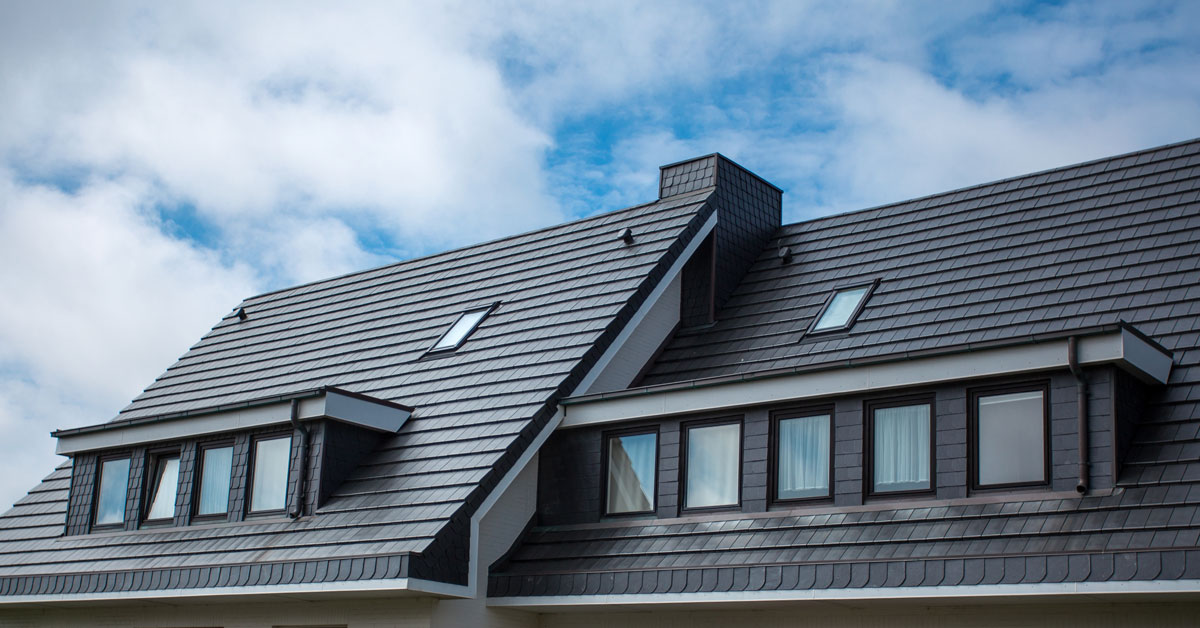Contrasting Prices Amongst Roofing Companies in Gainesville Florida
Contrasting Prices Amongst Roofing Companies in Gainesville Florida
Blog Article
Finest Practices for Ensuring Correct Roofing Ventilation
Making sure proper roof covering air flow is vital for the long life and performance of a roof. A balanced consumption and exhaust air vent ratio, typically 1:300, plays a crucial function, with consumption vents ideally placed at the reduced side of the roofing system for cool air access and exhaust vents at the peak for warm air leave. Regular examinations to determine clogs and keep clear air flow are extremely important. Keeping insulation away from vents is essential to prevent airflow constraint. Recognizing these fundamental elements establishes the phase for even more comprehensive insights into installation and maintenance practices that can considerably enhance your roof covering system's performance.
Understand Ventilation Fundamentals
Properly comprehending ventilation fundamentals is vital for guaranteeing the longevity and effectiveness of roof. Effective ventilation reduces dampness buildup and temperature extremes in the attic, both of which can lead to substantial architectural damages gradually. A well-ventilated roof helps in avoiding common issues such as mold growth, timber rot, and ice dams, which can jeopardize the stability of the roofing materials and the underlying frameworks.
The primary objective of air flow is to facilitate the activity of air, enabling a constant exchange in between the outside and interior environments. This balance is achieved with a combination of intake and exhaust vents that function with each other to preserve ideal airflow. Intake vents, usually located along the soffits or eaves, enable fresh air to enter the attic space, while exhaust vents, usually located at or near the roofing ridge, make it possible for hot, moist air to run away.
Secret aspects influencing the efficiency of roofing system air flow consist of proper positioning, sufficient sizing, and guaranteeing that both intake and exhaust vents are unblocked. Normal inspection and maintenance are important to identify prospective blockages, damage, or inadequacies in the ventilation system, thereby protecting the roof covering's performance and durability.
Kinds Of Roof Vents
Roofing system vents play a vital role in keeping effective attic room air flow and, by extension, the total wellness of the roof. Different types of roofing system vents are readily available, each with unique benefits customized to details roof needs. Ridge vents, for instance, are set up along the roofing's optimal, enabling cozy, moist air to escape from the attic room. They use continuous air flow and mix perfectly with the roofline, making them both reliable and cosmetically pleasing.

Soffit vents are set up under the eaves and work in tandem with roofing vents to guarantee a balanced consumption and exhaust system. By enabling cooler air to go into from below, soffit vents help with the expulsion of hot air through top vents. Gable vents, located on the outside wall surfaces of the attic room, deal another effective option, specifically in homes with saddleback roofs.
Evaluate Your Current Ventilation

Next, consider the age and condition of your roofing products and ventilation elements. Older systems may not follow existing structure codes or might have degraded in time, reducing their effectiveness. Conduct an extensive exam to determine any signs of wear and tear, such as rust, damage, or spaces that could compromise the system's efficiency.
Additionally, measure the attic temperature level and humidity degrees. Heats and moisture can indicate inadequate air flow - roofing companies in gainesville florida. Utilize a hygrometer and thermostat to obtain precise readings, contrasting them with exterior problems. Consistent disparities suggest potential concerns that require attending to.
Installment Best Practices
Efficient setup of roof covering air flow systems is vital for guaranteeing ideal efficiency and long life. Correct installment starts with recognizing the details ventilation demands of the building and the roofing it covers. This entails determining the appropriate proportion of intake to exhaust vents, normally adhering to the 1:300 policy, which specifies one square foot of ventilation for every 300 square feet of attic room flooring room.

The positioning of vents is just as essential. Consumption vents must be mounted at the roof's lower edge, often in the soffits, to allow amazing air to get in. Exhaust vents, on the various other hand, need to be installed near or at the roofing system's peak to promote the leave of cozy, damp air. This develops a natural air flow that helps keep temperature level and moisture balance within the check my reference attic space.
Seal all vent links diligently to stop air leakages and potential water seepage. Use top quality materials and comply with maker guidelines to ensure durability and efficiency. In addition, integrating ridge vents with baffles can considerably enhance air flow performance by protecting against wind-driven rain and snow from getting in the attic room.
Inevitably, specific setup of roofing air flow systems alleviates potential issues such as mold and mildew growth, ice dams, and structural damages, guaranteeing the roofing's honesty and the structure's overall why not try these out wellness.
Regular Upkeep Tips
Uniformity in maintenance methods is essential to ensuring the long-term performance of roofing ventilation systems. Regular assessments are critical, preferably carried out biannually-- in the spring and fall. Throughout these assessments, guarantee that vents are without debris, nests, and various other blockages that might hamper air movement. Look for any type of indicators of dampness buildup or mold and mildew, as these can show incorrect air flow or leakages (gainesville roofing companies).
Cleaning up the vents is an additional crucial task. Make use of a soft brush or a vacuum to get rid of dirt and particles from consumption and exhaust vents. Be careful not to damage the air vent displays or louvers throughout the process. Furthermore, examine the attic room room for any kind of indications of water damage, which might compromise the stability of the roof.
Correct insulation is similarly essential. Make sure that attic insulation does not obstruct the vents, as this can significantly limit air movement. If any insulation has shifted or resolved, rearrange or change it to maintain an efficient obstacle.
Last but not least, replace any harmed or missing components without delay. Busted vents, split shingles, or worn-out flashing can all add to poor ventilation and helpful site ought to be addressed without hold-up. Normal maintenance guarantees that the roof covering ventilation system operates ideally, therefore prolonging the life-span of the roofing system itself.
Verdict
Making certain proper roof covering air flow is paramount for preserving the performance and sturdiness of a roof. Adherence to the 1:300 consumption and exhaust vent proportion, paired with the calculated positioning of vents, is necessary. Regular biannual inspections, debris cleaning, and making sure insulation does not obstruct air movement are crucial methods. Executing these finest methods will certainly cultivate a well-ventilated roof system, thereby reducing possible problems connected to moisture buildup and excessive warmth, ultimately prolonging the roof's life expectancy.
A well balanced consumption and exhaust air vent proportion, typically 1:300, plays a critical duty, with intake vents ideally positioned at the lower side of the roof for trendy air access and exhaust vents at the optimal for cozy air leave. Intake vents, commonly situated along the soffits or eaves, enable fresh air to go into the attic room area, while exhaust vents, usually located at or near the roof covering ridge, enable hot, humid air to escape.
Soffit vents are mounted under the eaves and work in tandem with roof vents to make sure a balanced consumption and exhaust system. By allowing cooler air to enter from below, soffit vents facilitate the expulsion of warm air via top vents. Adherence to the 1:300 consumption and exhaust vent ratio, coupled with the calculated positioning of vents, is crucial.
Report this page